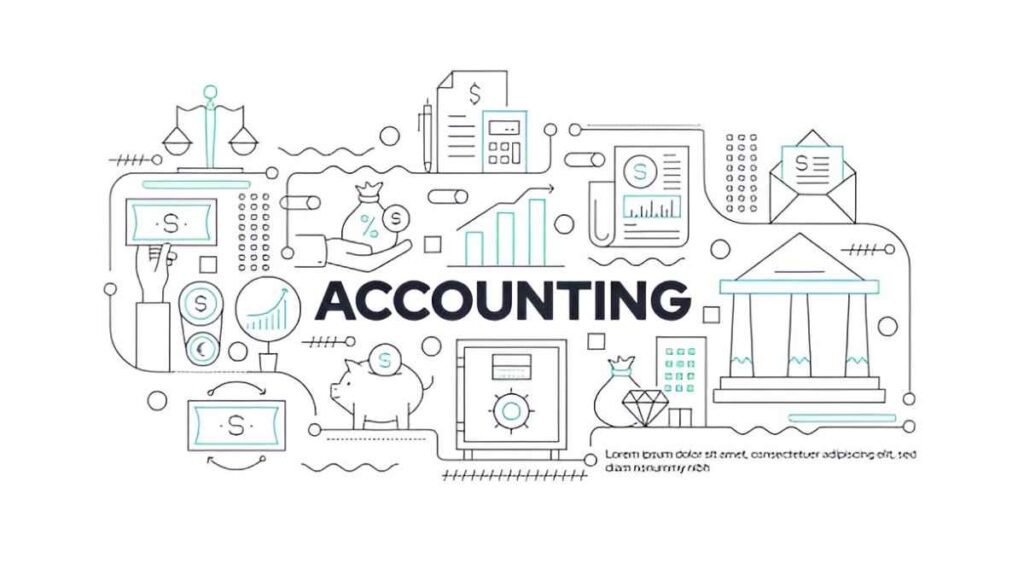When I first started exploring the world of finance, I was struck by how often seemingly unrelated industries influence financial metrics. One such concept that caught my attention was tonnage. At first glance, tonnage feels like a term reserved for shipping or manufacturing, but it plays a surprisingly significant role in finance. In this article, I’ll break down what tonnage means, how it’s measured, and why it matters in financial analysis. Whether you’re a student, a budding investor, or just someone curious about financial metrics, this guide will help you understand tonnage from the ground up.
Table of Contents
What Is Tonnage?
Tonnage, at its core, is a measure of weight or volume. It’s commonly used in industries like shipping, mining, and manufacturing to quantify the capacity or output of a system. For example, a ship’s tonnage tells us how much cargo it can carry, while a mining company might measure its output in tons of ore extracted.
In finance, tonnage becomes a proxy for understanding operational efficiency, capacity utilization, and even revenue potential. For instance, if I’m analyzing a shipping company, knowing its fleet’s total tonnage helps me estimate its revenue-generating capacity. Similarly, for a mining company, tonnage figures can reveal trends in production and resource availability.
Why Tonnage Matters in Finance
You might wonder why a seemingly industrial term like tonnage matters in finance. The answer lies in its ability to provide tangible, quantifiable data. Financial analysts often rely on abstract metrics like earnings per share (EPS) or price-to-earnings (P/E) ratios, but tonnage offers a concrete way to assess a company’s operational health.
For example, if I’m evaluating a logistics company, I can use tonnage data to:
- Estimate revenue based on cargo capacity.
- Assess operational efficiency by comparing tonnage to fuel costs.
- Predict future growth by analyzing trends in tonnage utilization.
Tonnage also serves as a bridge between physical operations and financial performance. By understanding how much a company produces or transports, I can better interpret its financial statements and make more informed investment decisions.
Types of Tonnage
Tonnage isn’t a one-size-fits-all metric. Depending on the context, it can refer to different measurements. Here are the most common types:
1. Gross Tonnage (GT)
Gross tonnage measures the total internal volume of a ship, with one ton equal to 100 cubic feet. It’s a crucial metric for shipping companies because it determines factors like port fees and regulatory compliance.
For example, if a ship has a gross tonnage of 10,000 GT, it means the ship’s total internal volume is 1,000,000 cubic feet.
2. Deadweight Tonnage (DWT)
Deadweight tonnage refers to the total weight a ship can carry, including cargo, fuel, and supplies. It’s a more practical metric for financial analysis because it directly relates to revenue potential.
For instance, if a ship has a DWT of 50,000 tons and charges $20 per ton to transport cargo, its maximum revenue per trip would be:
50,000 \text{ tons} \times \$20/\text{ton} = \$1,000,0003. Net Tonnage (NT)
Net tonnage is derived by subtracting non-revenue-generating spaces (like engine rooms) from gross tonnage. It’s often used to calculate port dues and taxes.
4. Metric Tonnage
In industries like mining and manufacturing, tonnage is often measured in metric tons (1,000 kilograms). This standardization allows for easier comparison across global markets.
Calculating Tonnage: A Step-by-Step Guide
Let’s dive into the math behind tonnage. While the calculations vary by industry, the underlying principles remain the same.
Example 1: Shipping Company
Suppose I’m analyzing a shipping company with a fleet of 10 ships. Each ship has a deadweight tonnage (DWT) of 30,000 tons. If the company charges $25 per ton to transport cargo, I can calculate its maximum revenue potential as follows:
- Total fleet capacity:
Maximum revenue per trip:
300,000 \text{ tons} \times \$25/\text{ton} = \$7,500,000This simple calculation helps me understand the company’s revenue potential based on its tonnage capacity.
Example 2: Mining Company
Now, let’s consider a mining company that extracts iron ore. Suppose the company operates a mine with an annual output of 1 million metric tons. If the current market price for iron ore is $100 per metric ton, I can estimate its annual revenue as follows:
1,000,000 \text{ tons} \times \$100/\text{ton} = \$100,000,000By comparing this figure to the company’s operating costs, I can assess its profitability and efficiency.
Tonnage and Financial Ratios
Tonnage isn’t just a standalone metric; it can be used to calculate financial ratios that provide deeper insights into a company’s performance.
1. Revenue per Ton
Revenue per ton measures how much money a company generates for each ton of cargo or product. It’s calculated as:
\text{Revenue per Ton} = \frac{\text{Total Revenue}}{\text{Total Tonnage}}For example, if a shipping company generates $50 million in revenue from 2 million tons of cargo, its revenue per ton would be:
\frac{\$50,000,000}{2,000,000 \text{ tons}} = \$25/\text{ton}This ratio helps me compare companies within the same industry and identify outliers.
2. Cost per Ton
Cost per ton measures the operating costs associated with each ton of cargo or product. It’s calculated as:
\text{Cost per Ton} = \frac{\text{Total Operating Costs}}{\text{Total Tonnage}}For instance, if a mining company incurs $40 million in operating costs to extract 1 million tons of ore, its cost per ton would be:
\frac{\$40,000,000}{1,000,000 \text{ tons}} = \$40/\text{ton}By comparing cost per ton to revenue per ton, I can assess a company’s profitability.
3. Tonnage Utilization Rate
Tonnage utilization rate measures how effectively a company uses its available capacity. It’s calculated as:
\text{Utilization Rate} = \frac{\text{Actual Tonnage}}{\text{Total Capacity}} \times 100For example, if a shipping company’s fleet has a total capacity of 500,000 tons but only transports 400,000 tons, its utilization rate would be:
\frac{400,000 \text{ tons}}{500,000 \text{ tons}} \times 100 = 80\%A high utilization rate indicates efficient operations, while a low rate may suggest underperformance or excess capacity.
Tonnage in Different Industries
Tonnage plays a unique role in various industries. Let’s explore how it’s used in shipping, mining, and manufacturing.
1. Shipping Industry
In the shipping industry, tonnage is the lifeblood of financial analysis. It determines a company’s revenue potential, operating costs, and regulatory compliance. For example, the Panama Canal charges tolls based on a ship’s net tonnage, making it a critical factor in cost management.
2. Mining Industry
In mining, tonnage measures the volume of extracted resources. It’s used to estimate reserves, calculate production costs, and forecast revenue. For instance, a gold mine’s profitability depends on both the tonnage of ore extracted and the gold content per ton.
3. Manufacturing Industry
In manufacturing, tonnage can refer to the output of raw materials like steel or cement. It’s used to assess production efficiency and capacity utilization. For example, a steel mill’s tonnage output helps investors gauge its market share and competitive position.
Challenges in Using Tonnage
While tonnage is a valuable metric, it’s not without its challenges. Here are some common pitfalls to watch out for:
1. Inconsistent Measurements
Different industries and regions may use varying definitions of tonnage. For example, a shipping company might report gross tonnage, while a mining company uses metric tons. This inconsistency can make comparisons difficult.
2. External Factors
Tonnage figures can be influenced by external factors like market demand, fuel prices, and regulatory changes. For instance, a shipping company’s tonnage utilization might drop during an economic downturn, even if its operations remain efficient.
3. Limited Scope
Tonnage alone doesn’t provide a complete picture of a company’s financial health. It must be used in conjunction with other metrics like revenue, costs, and profitability ratios.
Case Study: Tonnage in Action
To illustrate the practical application of tonnage, let’s analyze a hypothetical shipping company, Oceanic Freight.
Company Overview
- Fleet size: 20 ships
- Average DWT per ship: 40,000 tons
- Revenue per ton: $30
- Operating cost per ton: $20
Calculations
- Total fleet capacity:
Maximum revenue potential:
800,000 \text{ tons} \times \$30/\text{ton} = \$24,000,000Total operating costs:
800,000 \text{ tons} \times \$20/\text{ton} = \$16,000,000Profit margin:
\frac{\$24,000,000 - \$16,000,000}{\$24,000,000} \times 100 = 33.3\%This analysis shows that Oceanic Freight has a healthy profit margin, but its profitability depends on maintaining high tonnage utilization and controlling operating costs.
Conclusion
Tonnage is more than just a measure of weight or volume; it’s a powerful tool for financial analysis. By understanding how tonnage works and how to calculate it, I can gain deeper insights into a company’s operations and financial performance. Whether I’m analyzing a shipping company’s revenue potential or a mining company’s production efficiency, tonnage provides a tangible link between physical operations and financial metrics.





